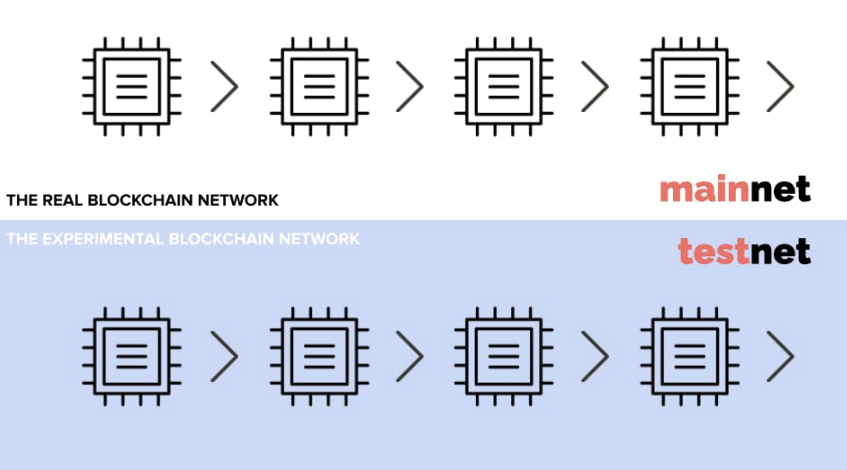public network: It is a network accessible to anyone with an Internet connection, and through replication of the main network, users can create and verify transactions.
mainnet: This is the main network where transactions of real value take place.
testnet: A network used by developers to test things like smart contracts before deploying them on the actual mainnet.
Especially on Ethereum, these testnets use a proof-of-authority mechanism or proof-of-stake. Proof of Authority is a consensus mechanism that provides a select few with the ability to validate transactions. Proof-of-Stake is another consensus mechanism that allows users to stake their cryptocurrency as collateral and then be selected to generate the next block. Typically, cryptocurrencies on testnet have no real value, but they may hold some value due to the scarcity of certain types of testnet cryptocurrencies.
There are many testnets for various cryptocurrencies. The testnet described in the next section is specifically for Ethereum.
There are two main Ethereum testnets: Sepolia and Goerli.
Sepalia: This testnet is recommended for application development on Ethereum. This is more useful for interacting with the network using nodes.
Goerli (to be replaced by Holesvoice): On the other hand, this testnet focuses more on verification and staking, and focuses more on users who want to become validators.
The difference between the two is that Sepolia uses proof of authority while Goerli uses proof of stake. Additionally, Sepalia is better suited for short-term applications and requires less storage space, while Goerli is the opposite and is used for long-term applications and requires more storage space.
If you want to know more, check out the link below.
network
What is a testnet?
Thanks for reading
If you liked this article, please read my other articles

